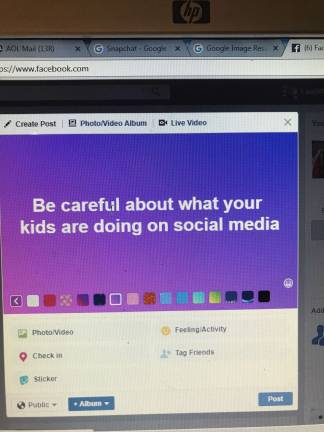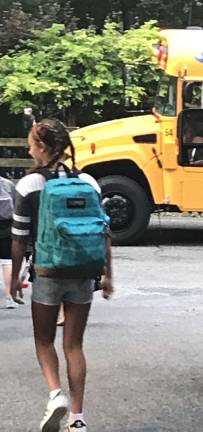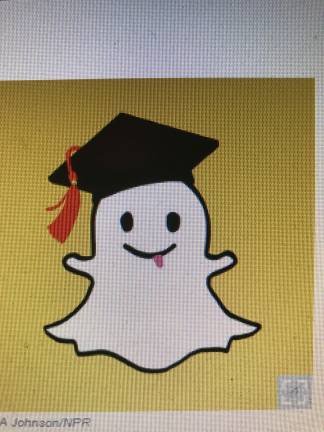Social media and our kids: Insight from local educators



By Laurie Gordon
Sussex County — Social media has changed the way schools operate and the way in which teachers interact with their students. It has encouraged social networking, which can be a great way for students to collaborate and learn its benefit in business world. But, it can also be a big distraction for students and has spawned a new form of bullying. For better or worse, social media is here to stay and with school back in session this week, here are some insights.
Brian Bosworth is the principal at Kittatinny Regional High School. He said, “At Kittatinny, we only allow technology to be used in school for academic purposes. We are well aware that most students engage through social media and we have implemented character education programs to encourage them to use it properly.” He added, “Social media doesn’t necessarily change the way teachers interact with students, but our teachers are conscious of how social media could affect student-to-student interactions.”
Regarding how technology, in general, comes into play with such innovations as white boards and Google Homework, Bosworth said, “Our job is to prepare our students for 21st century careers. Technology plays a large role in emerging professions. We want to make sure our students are comfortable with technology. Educational platforms like Google Classroom extend the school day. No longer are students and teachers limited to a 40-minute class. Students can work on assignments and collaborate with peers much more easily now.”
With social media, can come some unpleasant issues. Bosworth said, “When social media issues are brought into school, we follow our uniform discipline policy and code of conduct. Whereas school discipline used to be focused on only what happened during the school day, the current laws have now extended our code of conduct to issues that could start on social media and trickle into school.” He added, “Again, we focus on educating our students on the importance of digital citizenship.”
Bosworth said that when used positively, social media can greatly improve communication. “As a school, we have taken to platforms like Twitter to increase our communication with our community and celebrate student accomplishments.”
Janet Ferraro is the principal at Sparta High School. She said, “Social media has greatly changed the way all of us interact. Teachers and students share information via apps such as Twitter, Instagram, or a classroom or team page. We can all connect 24-7 with information, can update each other, and can communicate both information and questions.”
Ferraro added, “Schools now need to help students navigate the positive and negative possibilities that social media brings us. We have to assist in developing socially responsible digital citizens. All of us need to know our digital footprint including our social media responses can follow us for a lifetime. Schools use social media in many ways. Whether it be as a district, building, group or individual, we send out information, follow each other to become better informed, and interact with each other.”
She said that technology has certainly changed assessments and assignments. “We now have the ability to assign and assess in real time. We can conduct virtual field trips, experiments, work in groups on real world problems. The examples are endless.”
As to social media’s rapid progression, Ferraro said, “It is all changing and being added to so quickly. We need to keep up with consequences we once were not aware of previously. I don’t see the progression itself as negative, but I do believe it is hard for parents and schools to keep up with sites that allow for anonymous ridicule and cruelty of others. I find that part of social media to be the worst consequence. It’s much easier to sit behind a screen and treat others poorly, than to do so to someone face. That bothers me for many reasons.”
At Pope John XXIII High School, in Sparta, Brian Corcoran is a teacher in the mathematics and computer science departments and is also the school’s head cross country and track coach.
Of social media, Corcoran said, “Students interact less person to person and more remotely. Study halls and the lunch room are typically quieter.” He added,” Students need more activity to further educational stimulation. A blend of lecture and activity seems to work best. Since I have always taught computer programming, my class has mostly been a blend of lecture/ lesson and activity. Social media is a great way to engage students but like most things, limits need to be addressed.”
Sabrina Lucas is a resource teacher and long-time cross country coach at Wallkill Valley Regional High School, in Hamburg. She said, “This is my 31st year at Wallkill, and when I entered there was absolutely no social media.” She calls it, “a double edged sword,” and said, “The ability to obtain information right in the palm of your hand is incredible. The ability to lash out at someone is right in the palm of your hand. We had an incident years ago regarding a ‘sexting’ situation, and it made national news. MTV did an expose.” She added that students need to realize, “once you hit send, your picture or comment is out there and there is no turning back.”
Lucas added, “Students are distracted in class due to texting. Answers are shared on tests, I am sure, and pictures of tests are taken and shared. I try to make it a policy to have all cell phones away, or on my desk if it is a test or exam.”
Lucas said, “Many teachers and coaches use an app called ‘REMIND’. It is an approved way of communicating with students/athletes. As a coach I notify my team about practice time changes etc via this.”
In Stillwater, Lorraine Bickhardt teaches fifth grade math. She said, “The progression of social media has impacted the students in a positive way. The students are able to interact with not only their peers and teachers, but with interactive programs as well. I use my Activboard (interactive whiteboard) daily and would be lost without it. I am able to give my students lessons and activities that are hands on and the Activboards help bring the math ‘To life.’”
Bickhardt added, “I don’t lose instructional time drawing a graph on the board. For example, with my Activboard, that graph is created prior to the lesson and I am able to utilize it without loss of student’s interest. I am able to assign work that is adaptive to their learning which helps students to achieve even more. We utilize Chromebooks in the classroom and assignments can be individualized based on each student’s abilities.”
In today’s society, as the internet expands its platforms and connects people from all over the world, it’s hard for kids to not have some sort of social media presence. By and large, students as early as late elementary school have one or more accounts on varying networking sites including Instagram, Twitter, Tumblr, Snapchat, etc. Social media can provide a safe place for kids to grow and learn about all kinds of worldly topics such as breaking news headlines, historical events, how people climbed the ladder to fame, the Einstein Theory, how to say thank you in any language or... how to perfectly frost a cupcake or make an epic music video.
Perhaps, some educators opine, by limiting the amount of time spent on these social apps, the negative ramifications — such as cyberbullying — can be alleviated and the positive attributes of social networking will shine through.
When it comes to school and social media, Bosworth underscored the importance that every school always partner with the parents on the educational process. “I would encourage parents to have conversations with their children on the importance of positive social media interactions.”